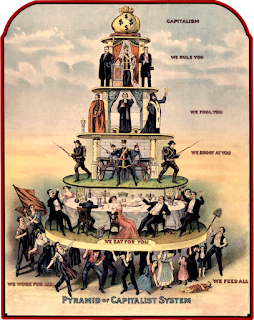The Illusion of the American Dream: Capitalism's Exclusion of the Masses
The American Dream has long been the beacon of hope, symbolizing the promise of upward mobility and prosperity for all. However, the reality of contemporary capitalism unveils a stark contrast, where the fundamental tenets of the dream seem elusive for the masses, merely an illusion perpetuated by the privileged few.
A gift from the people of France, she has watched over New York Harbor since 1886, and on her base is a tablet inscribed with words penned by Emma Lazarus in 1883: Give me your tired, your poor, Your huddled masses yearning to breathe free, The wretched refuse of your teeming shore.
Capitalism, at its core, embodies an economic structure that favors the accumulation of wealth and power by a select group, perpetuating a cycle of disparity that leaves the majority struggling at the periphery. Within this system, the means of production and distribution fall under the control of a small elite, who dictate the flow of resources and capital to their advantage. As a result, the wealth gap widens, leaving the marginalized communities striving to grasp the unattainable promises of prosperity.
Wall Street Dow Jone
In the context of the American Dream, the narrative of success often revolves around the ideal of self-made wealth and individual achievement. Yet, the harsh reality belies this narrative, revealing systemic barriers that obstruct the path for the disenfranchised. Limited access to quality education, discriminatory employment practices, and unequal distribution of resources perpetuate a cycle of poverty, making the pursuit of the American Dream a distant mirage for many.
Moreover, the commodification of basic human needs, such as healthcare, housing, and education, underscores the inherent flaws of a system that prioritizes profit over the well-being of the populace. The soaring costs of essential services leave countless individuals grappling with insurmountable debt and inadequate access to vital resources, rendering the pursuit of the American Dream an unattainable luxury.
While proponents of capitalism argue that it fosters innovation and rewards hard work, the stark reality paints a different picture. The concentration of power and wealth in the hands of a privileged few reinforces systemic inequalities and perpetuates a cycle of exclusion for the marginalized communities. As a result, the American Dream remains an elusive aspiration for those relegated to the fringes of society, held back by the confines of a system designed to benefit a select few.
Final Words.
In essence, the American Dream under capitalism
appears to be a façade, a glimmer of hope that dims in the face of
structural inequality and systemic barriers. Until the fundamental
dynamics of capitalism are reshaped to prioritize equity and inclusion,
the promise of the American Dream will continue to elude the masses,
leaving behind a trail of shattered aspirations and unfulfilled
potential. What is your opinion.



Comments